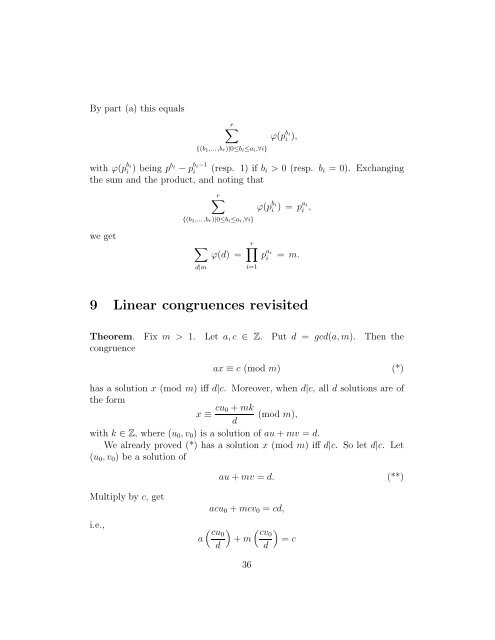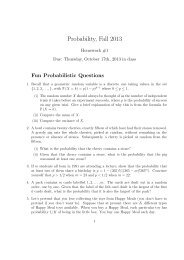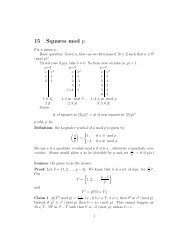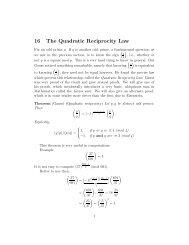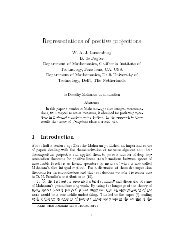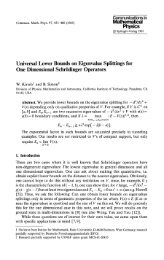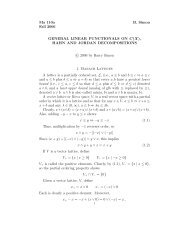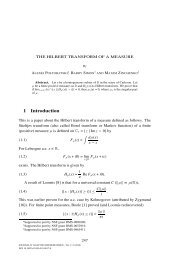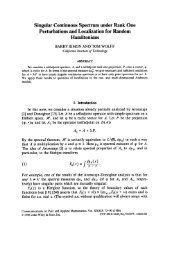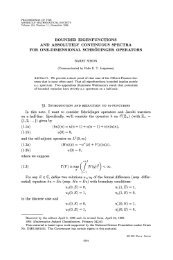1 Basic Notions - Caltech Mathematics Department
1 Basic Notions - Caltech Mathematics Department
1 Basic Notions - Caltech Mathematics Department
Create successful ePaper yourself
Turn your PDF publications into a flip-book with our unique Google optimized e-Paper software.
By part (a) this equals<br />
with ϕ(p bi<br />
i )beingpbi bi−1<br />
− pi r<br />
{(b1,... ,br)|0≤bi≤ai,∀i}<br />
ϕ(p bi<br />
i ),<br />
(resp. 1) if bi > 0 (resp. bi = 0). Exchanging<br />
the sum and the product, and noting that<br />
r<br />
we get<br />
{(b1,... ,br)|0≤bi≤ai,∀i}<br />
<br />
ϕ(d) =<br />
d|m<br />
r<br />
i=1<br />
ϕ(p bi<br />
i )=pai<br />
i ,<br />
p ai<br />
i<br />
= m.<br />
9 Linear congruences revisited<br />
Theorem. Fix m > 1. Let a, c ∈ Z. Put d = gcd(a, m). Then the<br />
congruence<br />
ax ≡ c (mod m) (*)<br />
has a solution x (mod m) iffd|c. Moreover, when d|c, alldsolutions are of<br />
the form<br />
x ≡ cu0 + mk<br />
(mod m),<br />
d<br />
with k ∈ Z, where(u0,v0) is a solution of au + mv = d.<br />
We already proved (*) has a solution x (mod m) iffd|c. So let d|c. Let<br />
(u0,v0) be a solution of<br />
Multiply by c, get<br />
i.e.,<br />
a<br />
au + mv = d. (**)<br />
acu0 + mcv0 = cd,<br />
<br />
cu0<br />
+ m<br />
d<br />
36<br />
<br />
cv0<br />
= c<br />
d


